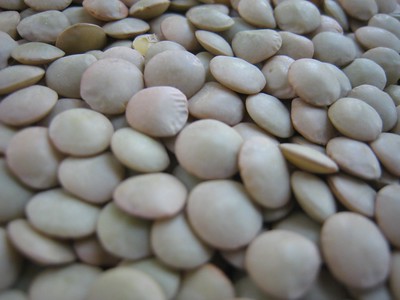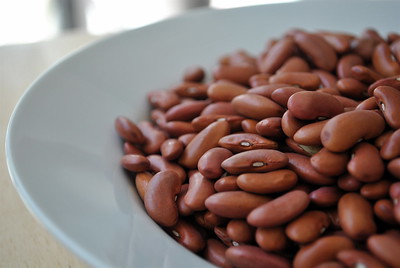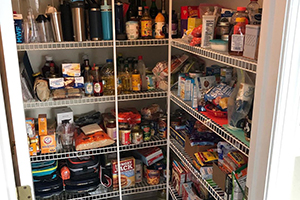It’s already occurring… What was previously an incomprehensible notion reserved for “conspiracy theorists” is now a reality that we must all try to accept as a group.
We come face to face with an ugly truth when grocery stores all over America widen their aisles in an attempt to hide their lack of products. There is a very strong chance that we are on the verge of a serious food shortage. Though it may seem impossible, there is still time to plan.
The rest of the population appears to struggle when woefully uninformed shoppers begin to panic buy and stuff their carts with toilet paper or boxes of soda. But if our grandparents and great-grandparents have taught us anything about life’s ups and downs, it’s that things are rarely as “doom and gloom” as they appear. Almost always, there is an alternative solution.
If you know the inherent value that certain foods have and how to make the most of them—some that might even be under most people’s radar—you’re already a long way ahead of the herd, despite the fact that most of the store’s shelves look empty.
Why You Should Stockpile This Food

Your food supply should, in an ideal world, consist of a few well-chosen, high-value, and durable bulk items.
The food stock items you pick should provide you with the very basics of fundamental necessities to keep you healthy and well for at least one to three months.
It should also talk about how much water is used, since managing your water supply will be very important.
Related: 10 Foods From The Chinese Store That Last a Long Time
Here are a few factors you might want to keep in mind when choosing which food item to stock up on:
- How much water will be required for cooking?
- When stored, how long will it stay fresh?
- How many things can you make with it?
Since you might be eating this food for a long period of time, doing this will help you prevent experiencing food fatigue or sensory-specific satiety.
Sharing its place with very few others, there is one food that answers all of these questions. It has literally stood the test of time. It has been around since the beginning of time and was among the first domesticated pulse crops that mankind ever cultivated. We’re talking about lentils.
Lentils Vs. Beans

Lentils and beans are both legumes—this means that they’re both a type of bean, but they’re also a “pulse seed” that comes from a pod. However, some argue that lentils fall into a different category of legumes. Aside from appearance, the main distinction between them is the number of nutrients they provide.
When it comes to overall nutritional value, lentils might not necessarily be better than dried beans, but they excel in many other areas. This is especially true in terms of storage, the quantity of water required to clean and cook them, the amount of time required to cook them, and the variety of meals you may prepare.
Lentils can be used in countless different recipes, from soups to bread to desserts to pie crusts. They don’t require soaking before cooking, and when stored, they last a very long time. They require very few additional ingredients to enhance their flavor and are simple to prepare, grind, and cook.
You can get a good amount of vitamin B, iron, potassium, zinc, magnesium, and omega-3 fatty acids from lentils. Furthermore, they have more fiber than beans, which promotes good digestion and gut bacteria. Since lentils have a fair amount of protein, they can stand in for meat when times are hard.
Purchasing lentils
Given how undervalued they are as a food, most stores will likely still have plenty of bags of lentils available long after the beans and rice have been consumed. There are usually several lentil types to pick from while shopping, including red, yellow, green, brown, and black.
Red lentils are the oldest and most popular type, while some people prefer other kinds of lentils for certain recipes.
Related: 8 Prepping Things That Have Got Really Expensive Recently
The good news is that all varieties of lentils are reasonably priced, so you can stock up on any type you find. For instance, a bag of brown or red lentils weighing one pound costs approximately less than a dollar.
You may even be able to purchase a 100-lb. bag of them for as little as $40 if you manage to find them in bulk or wholesale.
Storing Lentils
It’s simple to store your lentils. However, if you intend to keep them for an extended period of time, similar to other foods, some basic steps should be taken. The moisture content that might occasionally build up in closed containers or grain bins is the main factor that you need to keep an eye on when storing dried lentils.
The best approach to keeping moisture out of your lentils is to keep them in a cool, dark, and dry place.

Additionally, tannins found in pulse crops, such as lentils, can cause your lentils to oxidize and turn brown. Discolored or darkened lentils are a visual hint that your lentils might be past their prime.
However, they should still be safe to eat, provided there is no bad odor or mold. When stored properly, lentils can survive anywhere between three and ten years.
Another benefit of storing lentils is that weevil infestations are less of an issue than they are when storing beans and peas, which are other pulse crops. Even so, it doesn’t hurt to periodically check for bugs if you plan to store lentils for a while.
Cooking With Lentils
In order to feed their families, our ancestors did not rely on microwave meals or pizza delivery. As an alternative, depending on how far back you go, the majority of their diet was made up of seasonal vegetables, grains, and lean meats that were mixed together to create a balanced meal.
But when circumstances were tough, they made do with what they had—and boy, were they inventive!

It takes little time at all to prepare a homemade dinner with dried lentils because they are so quick and simple to prepare. In fact, depending on the type of lentils you choose, they may be prepared in as little as 20 minutes.
Related: How To Get Survival Products When You Have Almost No Money
Lentils are incredibly adaptable and versatile, and they easily work into a variety of creative recipes. They may be served on their own or combined with other foods, such as soups and salads.
You can also add them to ground meats to bulk up scarce rations. Here are a few of the most interesting lentil recipes we’ve discovered:
- High-protein lentil trail mix
- Lentils and scrambled eggs
- Lentil meatballs
- Lentil Meatloaf
- Soup
- Lentils, oats, and dehydrated apple breakfast bowl
- Lentils and German spaetzle
- Lentil sweet potato pie
- Vegan lentil burger patties
- Lentil and nut brittle
- Lentil, nut, and dried fruit energy bars
- Oatmeal, lentil, and nut cookies
- Lentil bread loaves and flatbread
- Ground lentil pie crust
- Ground lentil tortillas
The list goes on! You can’t overstate how important and useful it is to have lentils in your survival food stockpile.
Other Foods at $1/Pound You Might Want to Stock Up On
Lentils are a reasonable option for your survival food supply, but there are a lot of other foods that are equally relevant and worthy of honorable mention. Here are some examples of additional foods that can help you go farther when the supply chain is affected and the food shortage becomes increasingly evident:
1. Barley
Barley is a versatile grain that is easy to store. It is a calorie-dense, carbohydrate-rich meal that can be used to make flour, sweet beverages, or stews.
Related: 5 Best OTC Drugs You Should Stockpile
2. Beans
It’s a good idea to stock up on beans. They are, however, one of the more obvious options and are frequently among the first to be taken off the shelves. Stocking up on beans is a good idea if you can find them.
3. Oats
What can’t you do with oats with so many different cooking options? You can create bread, feed your animals, make oatmeal, bake cookies, soak them overnight, and do so much more with them.
4. Cornmeal
Cornmeal can be used to make tortillas, cornbread, and other dishes. It also stores quite well. You may roast and grind your own cornmeal at home if you have dry kernels on hand.
5. Brown Rice
Rice is the main food for more than half of the world’s people, so adding it to your survival food supply is a good idea. Brown rice not only contains a healthy amount of carbohydrates and fiber but also takes a while to digest, so you’ll have more energy throughout the day.
None of us can be sure of what tomorrow holds, but it would seem that an age-old expression is true: if you fail to plan, then you plan to fail.
Increasing your stash of survival food can help you prevent the unthinkable in the future. It will be easier for you to stay prepared in case of natural disasters or food shortages if you stock up on at least 3 months’ worth of long-lasting, high-calorie, nutrient-dense foods and plenty of water.




